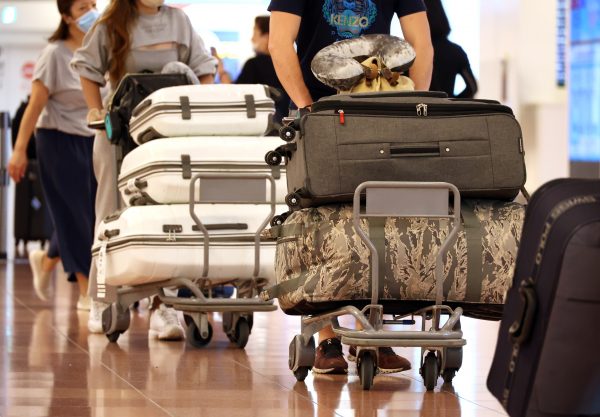Kishida has responded cautiously to domestic and foreign pressure to reopen Japan’s borders since April 2022. Japan reopened its borders to holders of long-term visitor, business or student visas on 1 June 2022, as well as to tourists on authorised package tours. Independent tourists are not yet granted entry, although they can be expected to be allowed back by Autumn 2022.
The Minister of Land, Infrastructure, Transport, and Tourism, Wada Kouichi, stated there had only been 1300 entry visa requests for travel purposes in Japan as of 15 June 2022. This is despite Japan having its lowest exchange rate in 24 years (136 yen to US$1). Indeed, Japan’s current border rules for foreign tourists are the most restrictive in Asia with the exception of China.
But Kishida’s COVID-19 policy response and his slow reopening have earned public support. This is no easy task in a country that has been sensitive to rising cases and experienced shortcomings like the government’s inability to provide enough hospital beds. The latest polls indicate broad support for Kishida’s approach — with COVID-19 becoming less of a salient issue for the now delayed Upper House elections in light of the 8 July 2022 shooting of former prime minister Shinzo Abe.
A FNN/Sankei poll found that 65.4 per cent of respondents support the government’s COVID-19 policies. 67 per cent support its program to encourage domestic tourism within Japan, while another 67 per cent support the loosening of COVID-19 restrictions — such as opening to foreign tourists. Thanks to his response to COVID-19 and the Russian invasion of Ukraine, Kishida has gone against the trend of recent prime ministers and seen his cabinet support steadily rise to 63–69 per cent since January 2022.
Japan experienced a slight uptick in COVID-19 cases after 194 new cases per million people was recorded on 5 July 2022. Experts attribute this to the spread of BA.5 — a new subvariant of COVID-19 — which is likely to cause a seventh wave of cases. Still, this number is lower than Australia (1076), New Zealand (964), Taiwan (2356) and Singapore (717) in the wake of their move away from ‘zero-COVID-19’ towards open borders.
While cumulative mortality per capita was higher in Japan in January 2022 than in most of its developed East Asian neighbours in 2020–2021, Japan now has the lowest death rate per capita outside of China. As of 9 July, Japan has experienced 249 cumulative deaths per million compared with 262 in Singapore, 314 in New Zealand, 317 in Taiwan, 400 in Australia and 480 in South Korea.
The increase of cases in Japan has led the government to take precautionary measures to bolster local government efforts to secure enough hospital beds. It will also re-evaluate the start of the Zenkoku Ryokou Shien program, which would have encouraged internal tourism through government subsidies.
Although Japan was slow to roll out its booster shot in January 2022, vaccine statistics show that as of 8 July 2022, 64 per cent of the population had received a booster shot compared to 38 per cent in the United States, 54 per cent in Australia, 59 per cent in the United Kingdom, 74 per cent in Taiwan, 74 per cent in South Korea and 78 per cent in Singapore.
While international partners, businesses, tourist companies, students and travellers are counting the cost of Japan’s closure, Kishida has managed to utilise it to reverse domestic frustration with the policies of former prime ministers Shinzo Abe and Yoshihide Suga. Depending on how the seventh COVID-19 wave develops, he may soon gain the political room to open Japan’s borders more widely.
Fuma Aoki is Konwakai Research Assistant at the Centre for Japanese Research, University of British Columbia.
Yves Tiberghien is Professor of Political Science and Konwakai Chair at the Centre for Japanese Research, University of British Columbia. He is the author of the East Asian Covid-19 Paradox (2021, Cambridge University Press).

